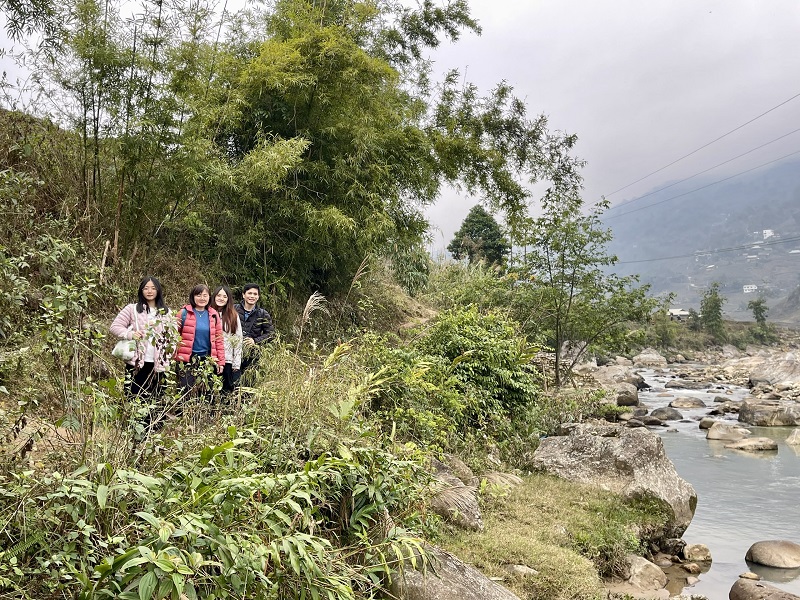- You are here:
- Home »
- Tours & Activities »
- The Best Trekking Route in Sa Pa During Autumn
The Best Trekking Route in Sa Pa During Autumn
Sa Pa, a picturesque town nestled in the northern mountains of Vietnam, is renowned for its stunning terraced rice fields, ethnic diversity, and breathtaking landscapes.
Autumn, which runs from September to November, transforms Sa Pa into a vibrant paradise of golden rice fields and cooler temperatures, making it an ideal time for trekking enthusiasts. This guide will outline one of the best trekking routes in Sa Pa for the autumn season, highlighting the mesmerizing scenery, cultural experiences, and practical tips for a memorable journey.
Route Overview
One of the most popular trekking routes in Sa Pa is the trek from Sa Pa to Lao Chai and Ta Van villages. This route is approximately 12 kilometers long and typically takes around 4-6 hours to complete, depending on your pace and the number of breaks you take. The trek is suitable for hikers of various skill levels and offers a perfect blend of natural beauty and cultural insights.

Starting Point: Sa Pa Town
Your journey begins in Sa Pa town, a charming area filled with colonial architecture, local markets, and numerous cafes. Before setting off, consider visiting the local market to pick up some snacks and water. Enjoy a hearty breakfast at one of the local eateries—the traditional pho, a Vietnamese noodle soup, is highly recommended.
The Trek Begins: From Sa Pa to Lao Chai
As you leave Sa Pa, the trail descends gradually through lush terraced rice fields. Autumn is the harvesting season, so you’ll see farmers busy collecting rice, creating a lively atmosphere filled with the sounds of laughter and conversation. The golden hue of the rice fields against the backdrop of the green mountains is a breathtaking sight that is perfect for photos.

Cultural Encounters
As you trek towards Lao Chai, keep an eye out for members of different ethnic minority groups, including the Hmong, Dao, and Tay people. Their colorful traditional clothing adds vibrancy to the landscape. Take the opportunity to interact with locals, as many are welcoming and willing to share their way of life, craft, and traditions.
Lao Chai village is a great place to stop for a short break. Here, you can explore the village, enjoy the stunning views of the terraced fields, and perhaps buy handmade souvenirs such as textiles and crafts directly from the artisans.

Continuing to Ta Van Village
After soaking in the sights of Lao Chai, continue your trek toward Ta Van village, which is around 3 kilometers away. The path is generally well-marked and traverses more rice fields and a few small streams. The air is crisp, and the smell of damp earth and ripened rice fills the atmosphere, enhancing the experience.
As you approach Ta Van, you will be greeted by the sight of bamboo houses nestled along the hillside. This village, predominantly inhabited by the Giay ethnic group, is picturesque and offers a range of guesthouses for those wishing to spend the night.

Cultural Immersion in Ta Van
In Ta Van, take your time to explore and immerse yourself in the local culture. Consider visiting a traditional homestay, where you can experience local cuisine prepared by your hosts. Dishes typically include sticky rice, grilled meat, and vegetable stir-fries. Sharing a meal with locals is a great way to learn about their customs and traditions.
You might also have the opportunity to participate in handicraft workshops, such as weaving or rice wine making, providing a unique insight into the daily lives of the villagers.
Return Journey
Once you’ve enjoyed your time in Ta Van, you can choose to either trek back to Sa Pa or arrange for transportation. Trekking back allows you to enjoy the scenery from a different perspective, and you may catch some spots you missed on the way in.

Tips for Trekking in Sa Pa
- Footwear: Wear sturdy trekking shoes to handle uneven terrain.
- Clothing: Dress in layers; mornings can be chilly, but it warms up quickly during the day.
- Water and Snacks: Carry sufficient water and snacks to keep your energy up.
- Respect Local Culture: Always ask for permission before taking photos of locals or their homes.
- Weather Preparation: Check the forecast beforehand, as autumn can bring unexpected rain.
Conclusion
Trekking from Sa Pa to Lao Chai and Ta Van villages during autumn is a memorable experience that offers stunning landscapes, rich cultural exchanges, and a taste of rural Vietnamese life. This route embodies the beauty of Sa Pa in its prime season, making it a must-try for any trekking enthusiast. Whether you’re seeking adventure, relaxation, or connection with nature and culture, this trekking route has something for everyone.
Thanh Tuan
About the Author Sapa Tourism Office
Popular posts

